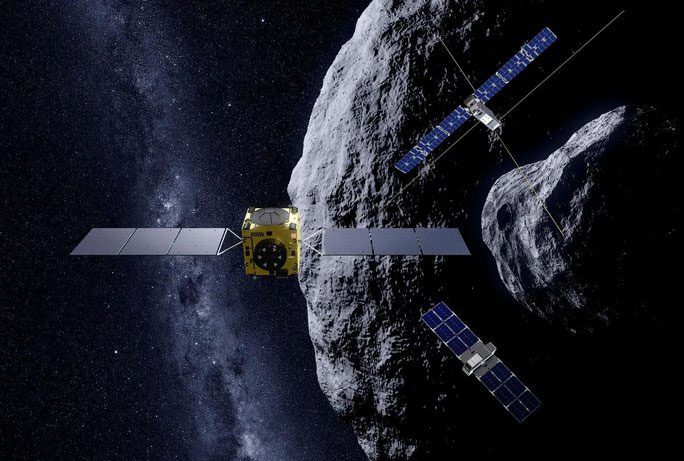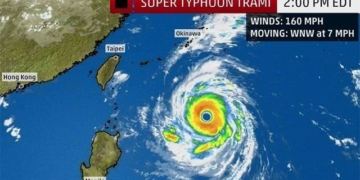Hera is the name of the killer spacecraft being developed by NASA under the management of the European Space Agency (ESA). It will be used in the exploration of the dead moon Dimorphos in 2024.
Hera is a mission in conjunction with NASA’s DART spacecraft, which is set to travel to the dead moon Dimorphos in 2024.
According to SciTech Daily, the Hera mission by ESA (European Space Agency) is part of a joint mission with NASA aimed at building a defense system for Earth against threats from outer space that could cause disasters, including catastrophic events like the mass extinction that affected the dinosaurs.

Hera spacecraft approaching its target – (Photo: ESA)
Last year, NASA’s DART spacecraft executed the first part of the plan with its “suicide” mission: it crashed directly into Dimorphos, an asteroid that acts as a “moon” for a larger asteroid, successfully altering its orbit.
This was a drill: if any other asteroid is calculated to be on a collision course with Earth in the future, even a small impact could help divert it and save humanity.
However, since it was a suicide mission, scientists could only indirectly evaluate the effectiveness of DART after the mission. The Hera spacecraft will carry out the remaining tasks.
The Hera spacecraft, roughly the size of a table, will be equipped with detailed guidance, navigation, and autonomous control systems similar to a self-driving car, carrying a highly sensitive optical camera and two CubeSats named Juventas and Milani.
It will approach Dimorphos and deploy the two sub-spacecraft. The Juventas CubeSat will conduct radar surveys of the asteroid, equipped with a gravimeter and accelerometer to measure surface mechanical responses and the gravity of this small moon. The Milani CubeSat will capture near-infrared spectral images and sample asteroid dust.

Hera and the pair of CubeSat sub-spacecraft – (Photo: ESA).
Not only will Hera control and support the two sub-spacecraft, but the mother ship, Hera – named after the queen of the gods in Greek mythology – will also practice and build experience in monitoring multiple spacecraft at the same time, a skill that many future “space carrier” versions will require.
The impact crater left by DART on this moon will also be thoroughly examined.
“Hera is scheduled for launch in October 2024. To meet that deadline, we have been working hard over the past year to finalize and test the sub-spacecraft systems; the overall mission has successfully passed the critical design review of the system at the end of 2022,” stated Ian Carnelli, the head of ESA’s Hera mission.
In 2023, Hera will be integrated and move towards environmental testing at ESA’s ESTEC test center in the Netherlands.



















































